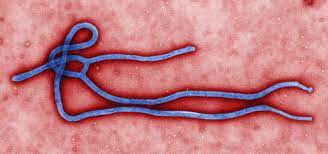In a recent study published in the journal Nutrients, researchers have revealed significant insights into how combined oral contraceptive pills (OCPs) may influence glycemic responses in healthy young women. This investigation highlights the potential impact of OCPs on women’s cardiometabolic health, particularly concerning metabolic syndrome (MetS), a condition characterized by hypertension, dyslipidemia, and impaired glucose metabolism.
Background
Metabolic syndrome is increasingly prevalent among women, especially those of childbearing age, leading to rising rates of cardiometabolic diseases. Data from the National Health and Nutrition Examination Survey (NHANES) indicates a troubling increase in MetS prevalence among women, from 25% in 1988-1994 to 34.9% in 2007-2012. Despite the widespread use of OCPs, their metabolic effects remain largely unexplored, necessitating further research into their implications for women’s health.
About the Study
The study involved 25 healthy young women aged 18-40, all of whom had been using a combined monophasic OCP for over three months. Participants were selected based on specific inclusion and exclusion criteria, including a body mass index (BMI) of 18.5 to 26.9 kg/m² and stable weight over the past six months. The researchers aimed to assess the postprandial glycemic response to an oral glucose bolus in relation to the type of OCP used—specifically, androgenic versus anti-androgenic pills.
Participants underwent a randomized crossover design, where each individual completed visits under both active and inactive phases of their OCP regimen. Blood samples were collected before and after glucose ingestion, allowing for comprehensive metabolic analysis.
Study Results
Of the 25 women enrolled, 21 completed both experimental visits. The results indicated significant differences in glycemic and insulin responses based on the type of OCP. Notably, plasma glucose levels peaked 30 minutes after glucose ingestion, with a marked effect of the pill phase detected (p = 0.002).
In women using androgenic pills, the incremental area-under-curve (iAUC) for glucose was significantly higher during the active phase than the inactive phase (p = 0.005). Insulin levels exhibited a similar pattern, with higher levels recorded during the active phase in androgenic users compared to anti-androgenic users. Notably, the time-to-peak insulin shifted from 30 to 60 minutes in the active phase among androgenic pill users.
Additionally, C-peptide levels demonstrated a significant interaction between pill type and phase (p < 0.001), indicating increased insulin secretion among androgenic users.
Conclusions
The study concluded that women taking OCPs containing androgenic progestogens exhibited significantly elevated postprandial glucose, insulin, and C-peptide levels during the active phase compared to the inactive phase. The iAUC increases—approximately 100% for glucose, 50% for insulin, and 42% for C-peptide—suggest that these OCPs may impair glucose tolerance and increase insulin resistance.
These findings emphasize the need for further investigation into the metabolic effects of OCPs, particularly in light of the increasing prevalence of MetS among women. The study serves as a critical step in understanding how contraceptive choices might impact long-term health outcomes in women.
Journal Reference
Cree JME, Brennan NM, Poppitt SD, et al. (2024). The Effect of the Oral Contraceptive Pill on Acute Glycaemic Response to an Oral Glucose Bolus in Healthy Young Women: A Randomised Crossover Study. Nutrients. doi: 10.3390/nu16203490. Link to article.












